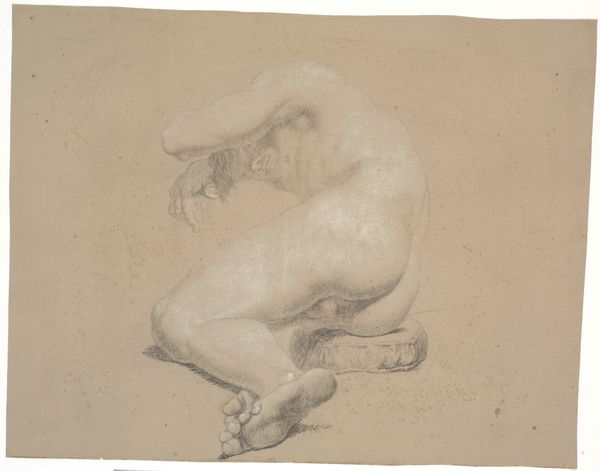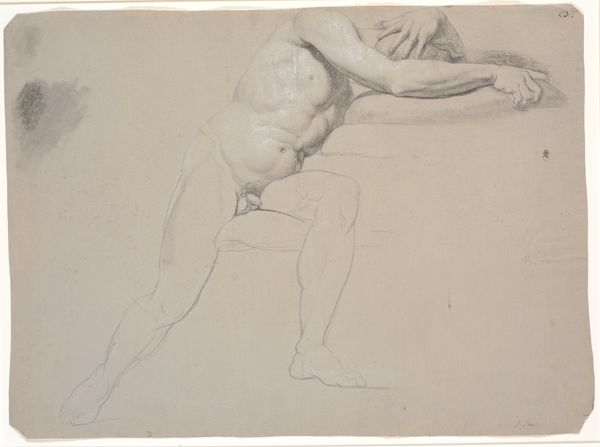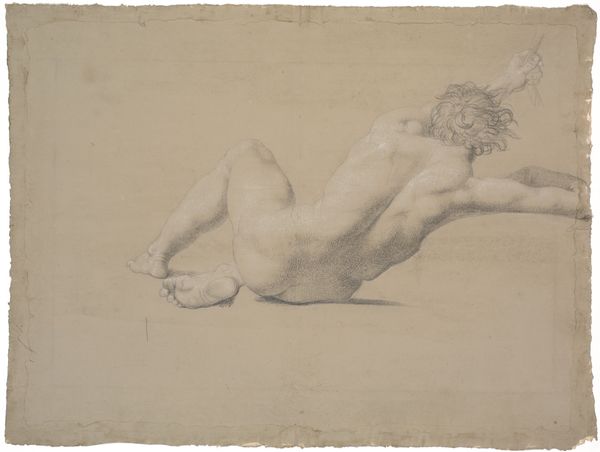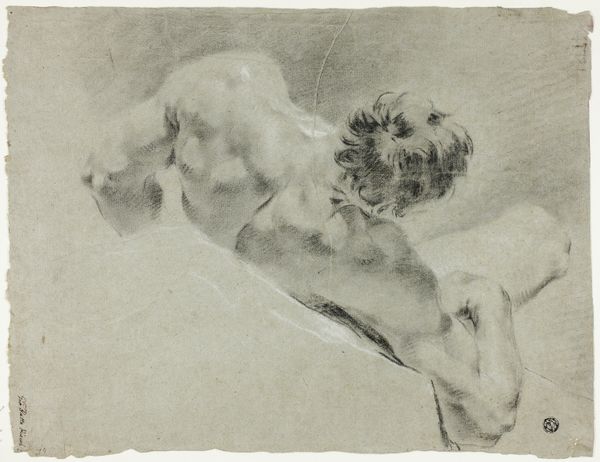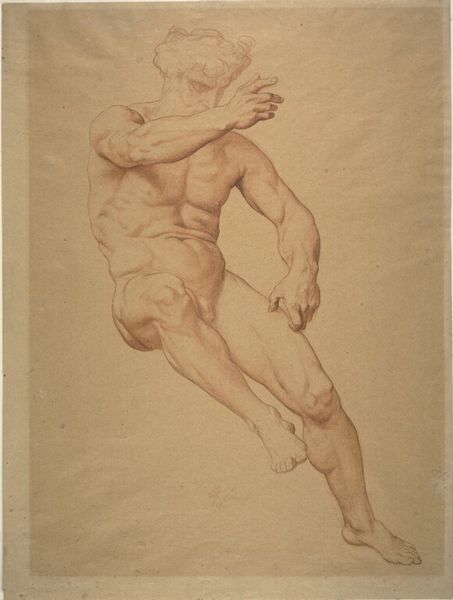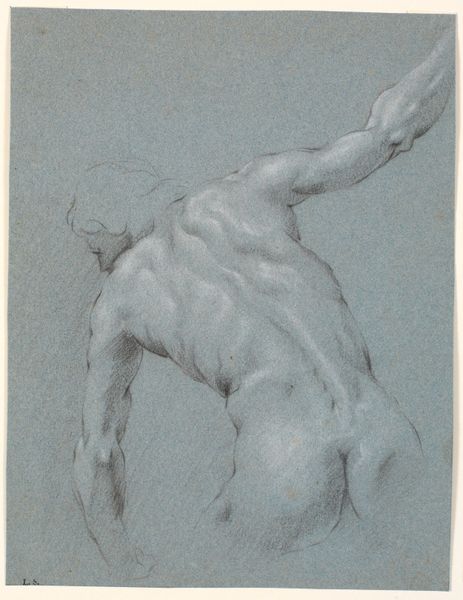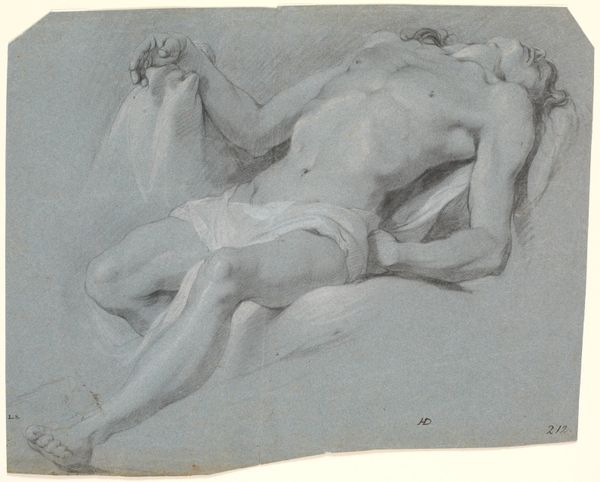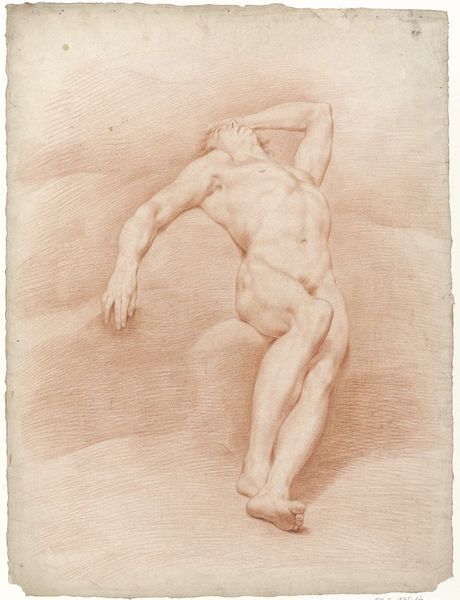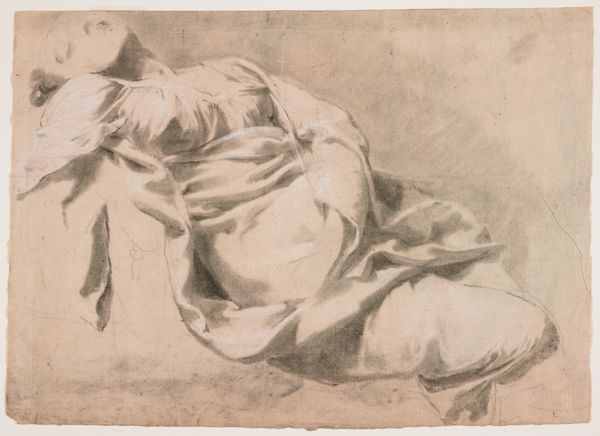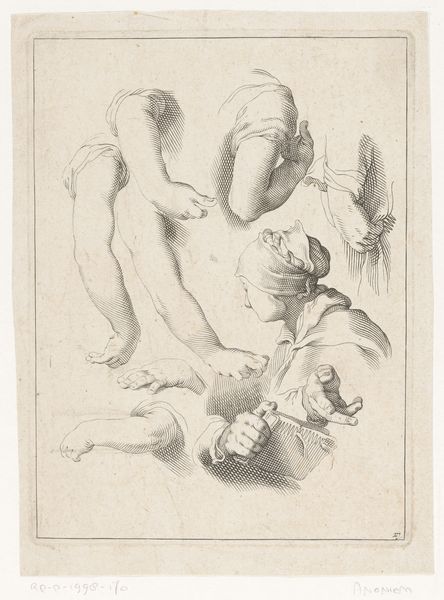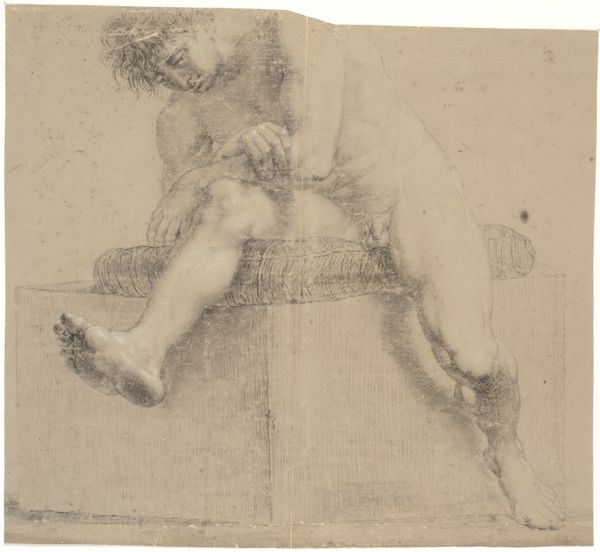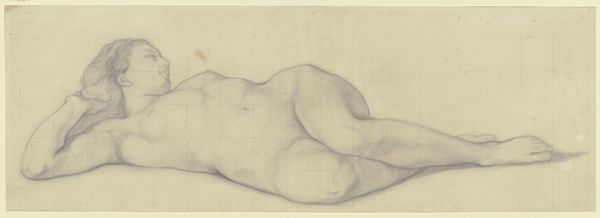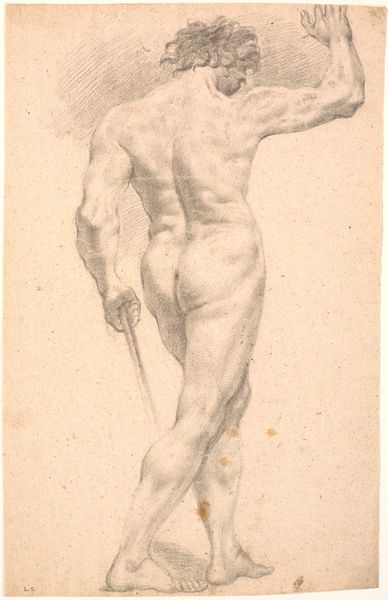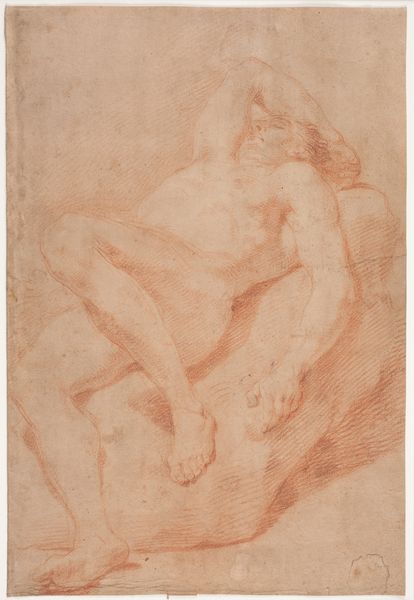
Study of Michelangelo's Night Sculpture from the Medici Tombs c. 17th century
0:00
0:00
drawing, pencil, charcoal
#
drawing
#
charcoal drawing
#
11_renaissance
#
pencil
#
charcoal
#
academic-art
#
nude
Dimensions: 10 7/8 x 16 13/16 in. (27.62 x 42.7 cm)
Copyright: Public Domain
Curator: Looking at this intriguing sketch, I’m drawn to the labor it represents—all those hours spent perfecting anatomy. It’s Cesare Dandini’s, from approximately the 17th century, and it's titled "Study of Michelangelo's Night Sculpture from the Medici Tombs.” It is currently housed at the Minneapolis Institute of Art. Editor: My initial impression is of weariness and introspection, that pose, the averted gaze. There's a profound weight to it. Is that, the "Night" from the Medici tombs as in death? Curator: Yes. This is a study, created in charcoal and pencil, copying Michelangelo’s famous marble sculpture on the tomb of Giuliano de' Medici. Dandini probably hoped to understand Michelangelo's technique or add to his repertoire. Editor: I see her hand, raised towards her face—partially obscuring her features, the symbols associated with sleep or perhaps deep mourning are there. Night can stand for oblivion or repose. Given the tomb setting, I’m leaning toward the mourning. It's also an allegorical representation of time passing in a state of grief or contemplation over mortality, a meditation on death that defined the period. Curator: Considering Dandini, his work often echoes a fascination with Renaissance masters. We need to recognize the artist's dependence on the predecessors but this doesn't subtract from Dandini's hand as a material fact in the later century that bears witness of past influence. Editor: Absolutely, and perhaps even the endurance of that artistic influence and these universal themes. Even copying, becomes part of the continuity. Notice too how Dandini renders that original work; the softening, rounding it suggests a further layer of sentimentality when it copies the more stylized, almost idealized version of antiquity, and death. Curator: I see what you mean. While Michelangelo sought an imposing figure reflecting Medici power, Dandini extracts a quieter, more emotionally accessible portrayal. This suggests differing priorities in their social contexts; one promoting Medici status, the other human empathy through academic exercise. Editor: An exercise perhaps imbued with feelings about mortality, too, and its portrayal. It highlights not just Michelangelo’s, but also Dandini’s skill in translating complex human emotion onto the page and into the memory, right? The work echoes and resonates with time. Curator: Fascinating how such diverse contexts – one of high art and the other that of training—both illuminate varying approaches to labor and material reuse. Editor: A convergence, it seems, that makes both the original, and the echo that more significant and rich.
Comments
No comments
Be the first to comment and join the conversation on the ultimate creative platform.
